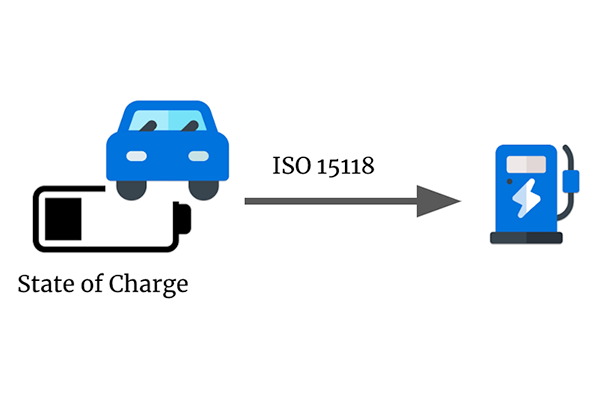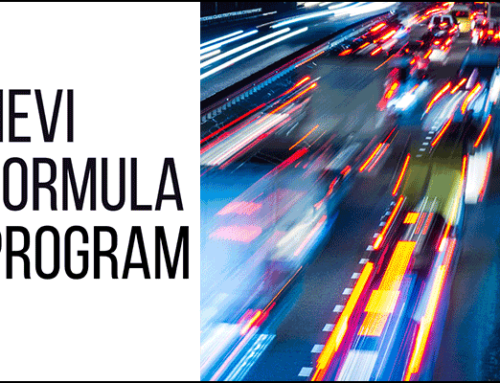ISO 15118, known as the “Vehicle to Grid (V2G) Communication Interface,” stands out as a pivotal international standard for electric vehicle (EV) charging. Addressing the rapid evolution and diverse challenges of the EV landscape, it introduces advanced features that set it apart from previous standards.
In the realm of EV charging, ISO 15118 is poised to redefine the experience. With its emphasis on interoperability, enhanced security, and smart charging, it promises a transformative journey for EV users.

Key Features of ISO 15118
- Bi-directional Power Flow: ISO 15118 enables electric vehicles (EVs) to not only draw power from the grid but also send it back. This Vehicle-to-Grid (V2G) capability aids in grid stabilization, especially during peak demand periods.
- Plug-and-Charge: This feature simplifies the charging process. Upon connection, EVs are automatically authenticated and authorized, eliminating manual interventions like using RFID cards or apps. This ensures a seamless and hassle-free charging experience.
- Improved Security: ISO 15118 prioritizes secure data transmission. It employs advanced encryption methods and utilizes certificates to guarantee secure communication between the EV and the charging station, safeguarding user data and payment information.
- Faster Charging: The standard optimizes the charging current based on the EV’s needs and the grid’s capacity. This results in efficient power delivery, reducing overall charging times and getting drivers back on the road quicker.
In essence, ISO 15118 offers a comprehensive and forward-thinking approach to EV charging, addressing both user convenience and grid efficiency.
Benefits of ISO 15118
- More Convenient Charging: ISO 15118 streamlines the charging process. With features like “Plug-and-Charge,” users experience fewer steps and reduced waiting times, making the entire process more efficient and user-friendly.
- Future-proof: The standard is not just for today’s EV landscape. It’s designed with the future in mind, ready to accommodate emerging smart grid features, including the promising Vehicle-to-Grid (V2G) capabilities. This ensures that as technology evolves, ISO 15118 remains relevant.
- Global Compatibility: One of the standout benefits of ISO 15118 is its universal approach. By establishing a unified charging standard, it promotes global compatibility, ensuring that an EV from one region can easily charge in another, simplifying international travel for EV users.
- Cost-Effectiveness and Enhanced User Experience: The standard’s ability to communicate real-time pricing and optimize charging based on grid demand can lead to cost savings for users. Additionally, the seamless and secure charging process significantly enhances the overall user experience, making EV charging a breeze.
Status of ISO 15118 Adoption
ISO 15118 made its debut in 2013, heralding a new era in EV charging. Recognizing the industry’s dynamic needs, the standard underwent significant refinements in 2018. Since then, it has gained traction among leading carmakers. Brands like Volkswagen, BMW, and Mercedes-Benz have integrated ISO 15118 into their EV models, showcasing its growing significance.
Furthermore, organizations such as CharIN and Hubject have been pivotal in promoting ISO 15118. Their collaborative efforts aim to standardize the EV charging experience globally, ensuring consistency and reliability for users everywhere.
Challenges With Implementing ISO 15118
While ISO 15118 offers numerous advantages, its implementation comes with challenges. Existing chargers and networks often require hardware upgrades to fully utilize the standard. This can pose significant investment challenges, especially for established charging networks.
Another hurdle is vehicle compatibility. For users to reap the full benefits of ISO 15118, they need vehicles that support the standard. As of now, not all EVs on the market meet this criterion.
However, with challenges come solutions. Collaborative efforts between charging providers, car manufacturers, and industry stakeholders can pave the way for a phased and cost-effective transition. Raising awareness among consumers can also drive demand for compliant vehicles, accelerating the adoption of the standard.
In the evolving landscape of electric mobility, ISO 15118 stands as a beacon, poised to significantly shape the future of the EV industry. By fostering a standardized and efficient charging process, it underscores the importance of collective engagement from consumers, manufacturers, and charging networks. As awareness and adoption grow, ISO 15118 is not only anticipated to become a cornerstone in the EV realm but also holds the potential to set the global standard, heralding a unified and sustainable future for electric transportation.














